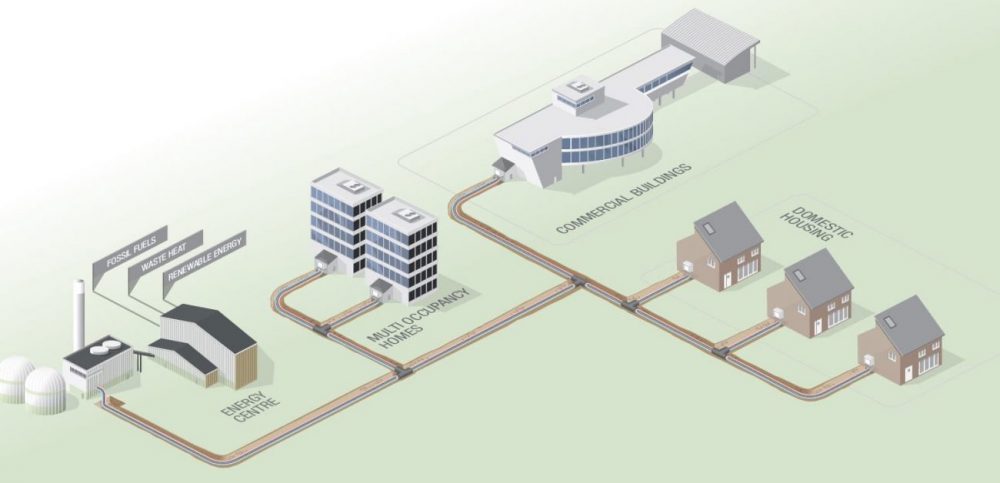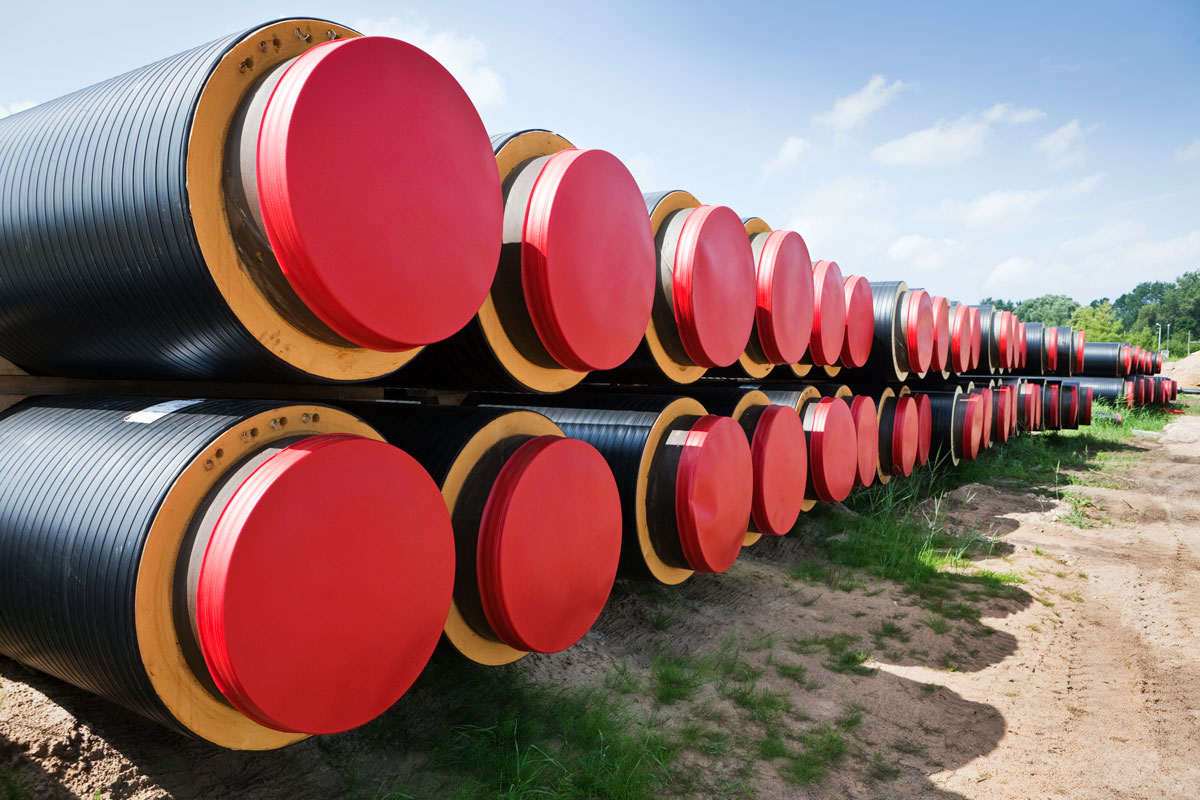District Heating
Subscribe to newsletter
What is District Heating?
When it comes to heating our homes and businesses in Dublin, we rely almost completely on carbon intensive fuels like gas and oil. This means heating accounts for the largest portion of energy-related emissions within the Dublin region.
Ireland imports most of its oil and gas, which means our heating is also costing us money due to rising energy costs. However, District Heating is a solution to both of these problems that is gaining attention in Ireland.
District Heating is essentially an underground network of super-insulated pipes. Rather than each house having their own individual gas or oil boiler, district heating does exactly what it says, it heats districts (that is more than one building at a time).
Where does the heat come from?
In Dublin, huge amounts of heat are being produced from production work at places like:
- power plants,
- data centres,
- large industries (including factories and breweries), and
- wastewater treatments plants and sewer pipes.
This heat is being pumped into the atmosphere or waterways and is being wasted. The good news? District Heating can capture this waste heat and use it to heat buildings around Dublin.
Heat is also produced from renewable sources like:
- Geothermal energy,
- rivers & seawater, and
- ambient (outdoor) air.
In fact, according to research from Codema, Dublin’s Energy Agency, there are enough waste-heat and renewable opportunities in Dublin to heat the equivalent of 1.6 million homes. This would reduce Dublin’s fossil fuel bill by a staggering €1 billion each year.
How does District Heating work?
Once the network of pipes has been laid, this District Heating system allows heat generated from an energy centre to be delivered to multiple buildings. Typically, the heat would be delivered as hot water.
These systems are “closed-loop”, so once the hot water coming from the energy centre has delivered its heat to the building, this cooled water then returns to the energy centre to be reheated again.
District Heating schemes in cities typically start by setting up a number of smaller, stand-alone networks. These are then connected together into a larger scheme. Essentially, joining the dots from one small network to another over time to create a larger network.
This isn’t new technology. In fact, it has been around since the early 19th century. It currently supplies heat to more than 98 per cent (98 out of every 100) of buildings in Copenhagen and 80 per cent (80 out of every 100) of buildings in Stockholm.

What are the benefits of District Heating?
More comfort
District Heating improves indoor comfort and provides hot water on-demand 24 hours a day.
Improved energy ratings
District Heating can improve the energy ratings of buildings connected to it. This also potentially increases their value.
Health and safety benefits
District Heating provides health and safety benefits, as the absence of boilers and fuel storage reduces risks of:
- fire,
- explosion,
- gas or refrigerant leaks within buildings, and
- carbon monoxide build-up.
Improved air quality, less noise
District heating networks like the Tallaght District Heating scheme are supplied by local and renewable energy sources, this leads to improved air quality. It is also much quieter than traditional heating systems.
Green jobs, more affordable fuel
District Heating has wider benefits for society and environmental benefits for consumers. For example, the creation of green jobs and reduction of energy poverty.
‘Energy poverty’ – when a household spends at least €1 out of every 10 they have (10 per cent) of their disposable income on energy.
Benefits the environment
The benefits to the environment of District Heating include reduced carbon emissions. This contributes to:
- EU and national carbon-reduction targets,
- reduced dependency on fossil fuels, and
- reduced dependency on international markets.
Reduces carbon emissions
District Heating can allow waste heat that is typically unused to be captured and used to supply heat to homes and businesses. This waste heat can come from, for example, electricity generation or industrial processes. This reduces the need to consume further fuel and significantly reduces carbon emissions.
Heat can be harnessed from many sources
District heating is ‘fuel-agnostic’. This means that multiple heat sources can feed into the District Heating grid. Codema research found more than 500 heat sources in Dublin alone!
This is great news for:
- competitive heating costs
- security of supply, and
- importantly for low-carbon heat.
What’s next for District Heating in Dublin?
District Heating is used for less than 1 per cent of Irish heating. This is true, even though it is widely used and is proven to work in many countries. There are about 10,000 District Heating networks in Europe.
Huge potential for District Heating in Dublin
Dublin has huge potential for District Heating and can contribute significantly to meet our national targets. For example, Codema research found that by 2050, 87 per cent of heating needs across Dublin could be provided through District Heating. This is the same District Heating being supplied to:
- 538,983 homes, and
- 41,394 businesses.
The good news is that momentum is building across Dublin. District Heating projects are underway and planned in:
- Tallaght,
- Grangegorman,
- Blanchardstown, and
- Dublin Docklands.
First large-scale District Heating scheme in Tallaght
The Tallaght District Heating scheme is the first large-scale District Heating network in Ireland. It will operate as Ireland’s first not-for-profit utility. It will significantly contribute to reducing emissions in the area. It will supply heat to:
- South Dublin County Council buildings, and
- TU Dublin-Tallaght campus.
It will also soon be supplying heat to 133 affordable apartments and an innovation centre and is looking to extend to buildings like the Tallaght University Hospital and other new residential developments in the area.


